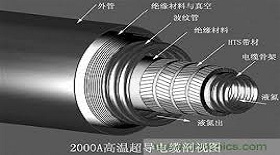Superconductors
Superconductors, with almost zero resistance, could theoretically pass through an enormous electricity current, reducing the volume and mass of the electromagnetic actuator and further increasing the power density. Since the discovery of the "high-temperature superconductor" won the Nobel Prize in 1987, scientists around the world have put a lot of effort and money into research.
It is said that German scientists discovered in 2015 when 0.01% of graphite particles - 70 ℃ may superconducting. The scientific community is a sensation, but it is not practical for engineering machinery.
Superconducting temperature of the metal hydrogen is said to have up to 20 ° C. In early 2017, a team of researchers at Harvard University claimed that metal hydrogen was produced by pressurizing 500,000 MPa. Half a million MPa which can exceed the pressure of the center of the earth is also close to the breaking point of synthetic diamond strength.
So it's hard to say when superconductors will enter industrial production.
Until room temperature superconductor technology or some other new technology comes into play, hydraulic transmission can continue to crow about its high density of forces.



